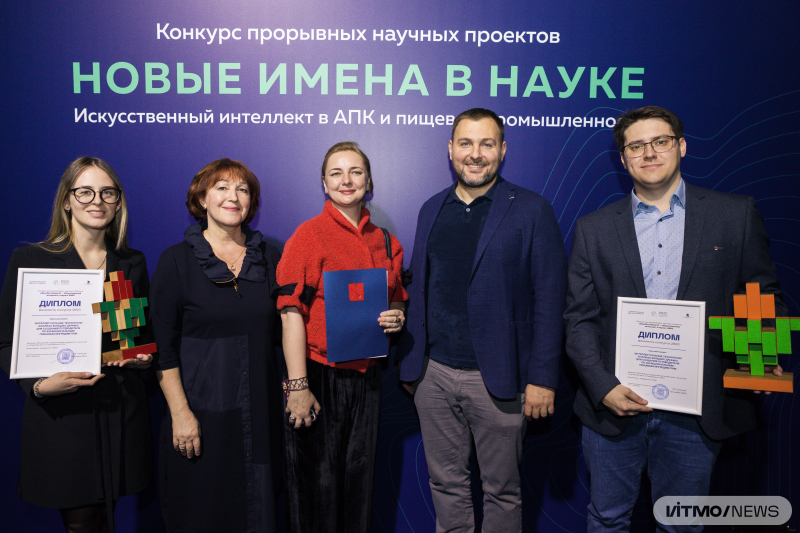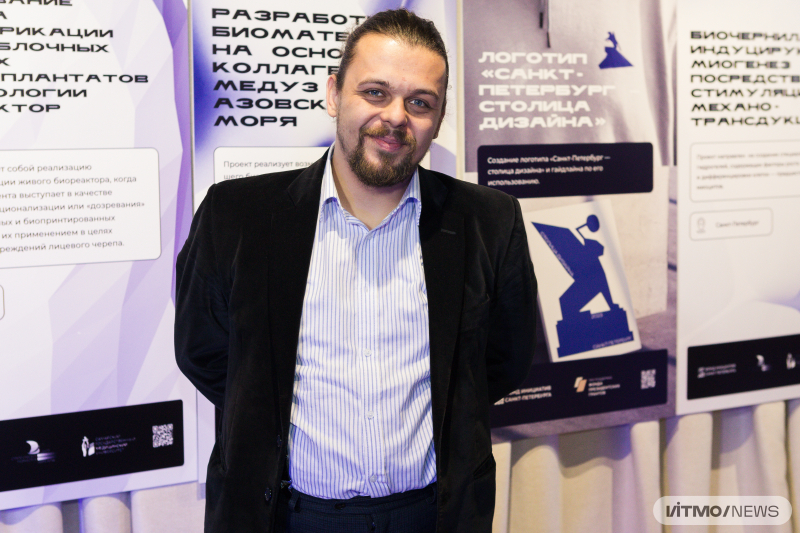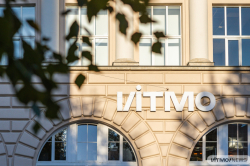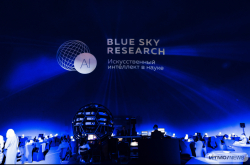On November 22, the winners were awarded by Vladimir Knyaginin, the Vice Governor of St. Petersburg, Sergey Salkutsan, the head of the Foundation for Support of Innovations and Youth Initiatives, and Andrey Maksimov, the head of St. Petersburg’s committee for science and higher education.
“The Blue Sky Research competition is one of the experimental projects implemented in St. Petersburg alongside the traditional forms of providing funding for research. Aiming to support promising ideas, the competition seeks out projects in high-risk interdisciplinary fields that might not secure funding via the more traditional means given the current budget legislation. As we can see, based on the results of last year’s competition, such investments do prove to be fruitful,” said Vladimir Knyaginin.
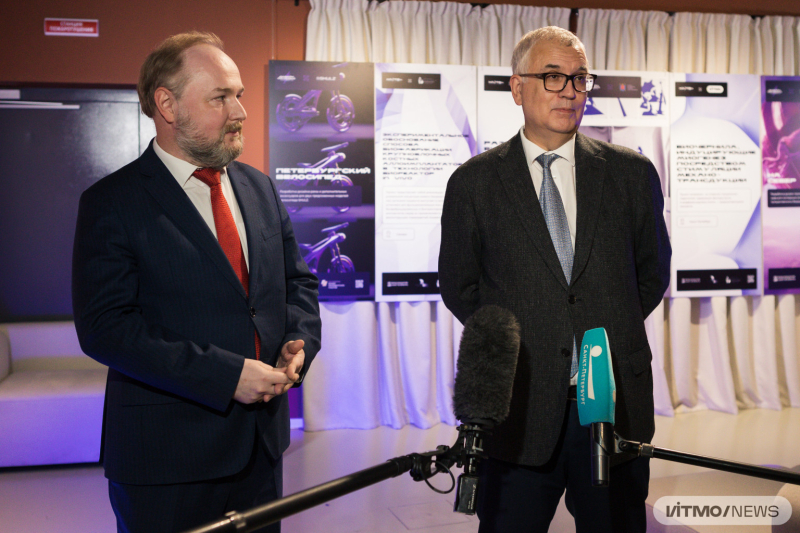
Sergey Salkutsan and Vladimir Knyaginin. Photo by Dmitry Grigoryev / ITMO.NEWS
According to Sergey Salkutsan, the topic of this year’s competition – AI in the agricultural and food industries – isn’t accidental: these are fields with the most potential for a leap forward in terms of AI research. In their selection of the best projects, the expert board focused on interdisciplinarity: it was essential that the projects comply with the announced topic, namely the application of AI technologies in the two selected industries. Additionally, the topic’s “blue sky-ness” – its originality, risks, and focus on exploratory research – was a key factor, too.
A total of 170 young researchers from 20 Russian cities took part in this year’s competition, presenting 76 interdisciplinary projects. 10 teams proceeded to the final to split the 15-million-ruble prize fund. Four of the winning projects were developed at ITMO.
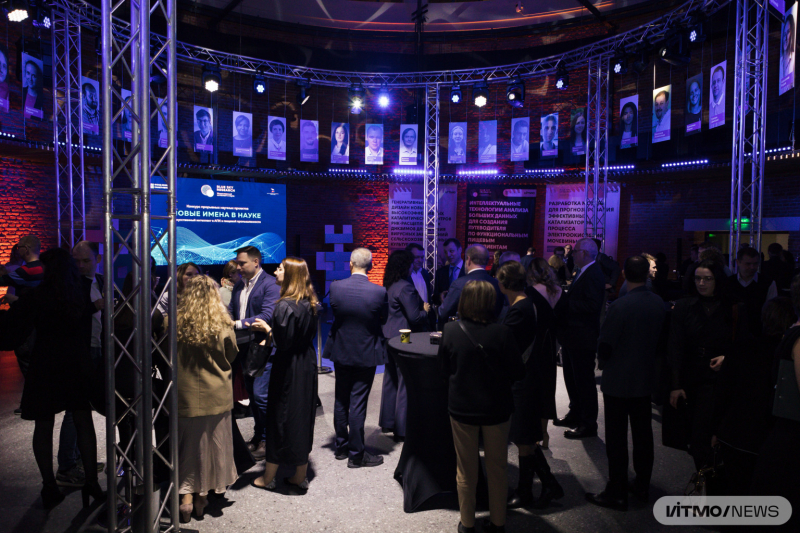
The awards ceremony of Blue Sky Research competition. Photo by Dmitry Grigoryev / ITMO.NEWS
ML-based ingredients guide
A machine learning-based ingredients guide was developed by the team comprising Artemy Zenkin, an assistant at ITMO’s Infochemistry Scientific Center, and Maria Ashikhmina, an engineer at the center. Thanks to machine learning, the guide can analyze food ingredients and assess the intensity of their taste. Using umami, the taste of high-protein foods and sodium glutamate, as an example, the team tried to find out what plays a greater role in forming the taste: the binding of peptides to receptors or a person’s subjective perception. In their project, the team analyzed cascade algorithms that analyze the intensity of taste created by a specific peptide.
“We are now working on a database that will help us analyze other tastes, as well: sweet, sour, salty, and bitter. Our platform would help chefs in developing new recipes: now, it takes about 1-1.5 months to create and test a new one. In the future, we are planning to test our technology on the meals offered at the restaurant chain Khacho i Puri, develop a full-scale search service for products with the best taste combinations, and attract partners. Our project can also help create digital twins of products, which is a relevant feature for personalized eating,” shared Maria Ashokhmina.
Maria Ashikhmina and Artemy Zenkin at the awards ceremony of Blue Sky Research competition. Photo by Dmitry Grigoryev / ITMO.NEWS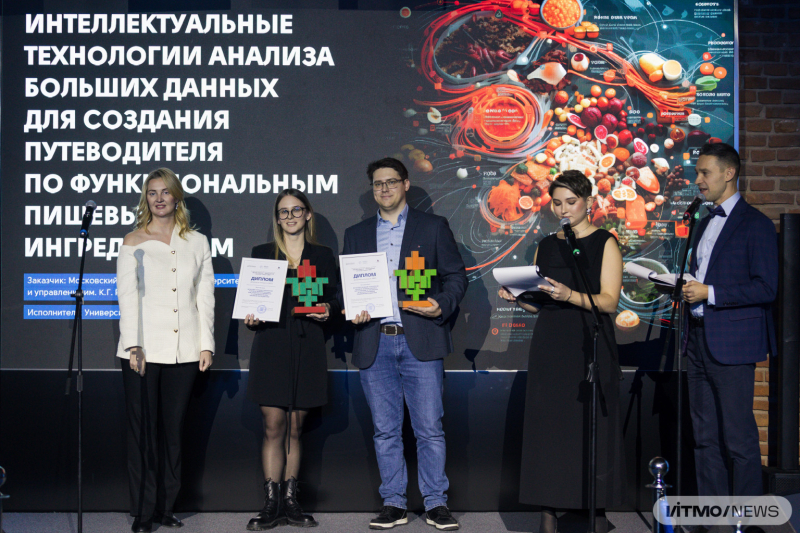
Algorithm for curing plant viruses
Another team, this time featuring engineer and junior researcher Nikita Serov and Master’s student Maria Eremeeva, both from ITMO’s ChemBio Cluster, created an algorithm that selects the most efficient antivirus DNA structures to treat diseases in crops.
About a half of all plant diseases are caused by viruses. These are most commonly treated by virucides, which are unselective disinfectants harmful for people and plants; the virucides also quickly become ineffective due to resistibility. ITMO scientists have suggested a safer approach: short DNA sequences that can bind to the genetic material of viruses and “shut them down.” The researchers turned to machine learning to quickly create such efficient structures.
“We’ve already developed an evolutionary algorithm that finds DNA structures efficient in inactivating viruses. We are now developing a website that will make our findings available to other researchers. We are also planning to expand our algorithm to involve a wider range of compounds and applications. In the future, the algorithm could be used to treat not only plants, but animals – as an alternative to the CRISPR-Cas genome editing technology,” shared Nikita Serov.
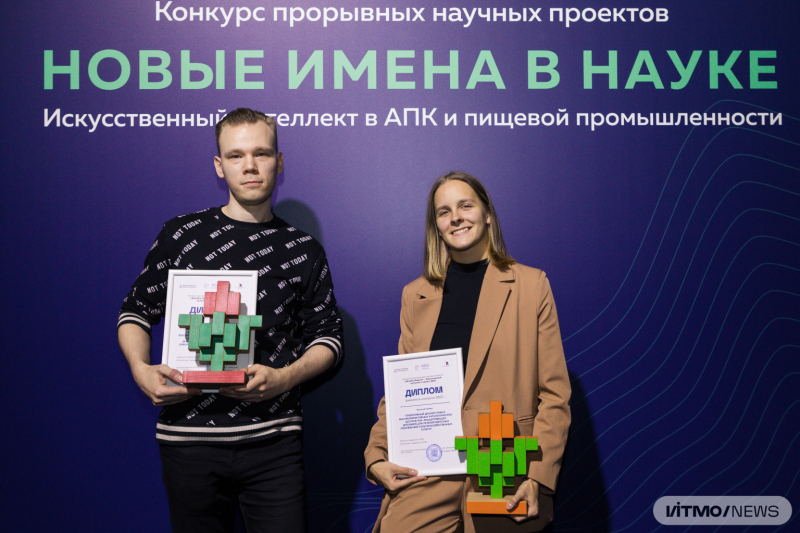
Nikita Serov and Maria Eremeeva. Photo by Dmitry Grigoryev / ITMO.NEWS
Model for identifying efficient catalysts to eliminate urea from water
Among the great number of molecules harmful to the environment, there is urea, which turns into nitrogen oxide and thus contributes to global warming. Researchers from ITMO have suggested transforming urea into useful substances, such as various gasses (nitrogen and hydrogen) in an electrochemical reactor. For this purpose, the team has developed software that predicts efficient catalysts; as its input, the program takes the parameters of the urea oxidation experiment and produces the make-up and form of the necessary catalyst as the output. The solution will be useful for corporate R&D departments (for instance, agricultural productions with urea in their sewage), as well as scientists who study related reactions. The project could also be adapted for other electrochemical reactions.
The project’s team includes Elena Krivoshapkina, the head of the Laboratory of Applied Materials for the Energy Sector, Anastasia Dmitrieva, a junior researcher at the lab, and Anna Fomkina and Elizaveta Romanenko, Master's students at the ChemBio Cluster.
“We are addressing the “bad scientist” problem: oftentimes, you try to find the necessary catalysts by trial and error, wasting energy and resources. With AI, you can do the same more quickly and efficiently. We work at an energy-oriented lab, so we chose to focus on the problem of the incomplete carbocycle and addressed the reactions that result in energetically useful substances. Our participation in the competition helped us develop a business model for the project and a map of communications,” said Anna Fomkina and Anastasia Dmitrieva.
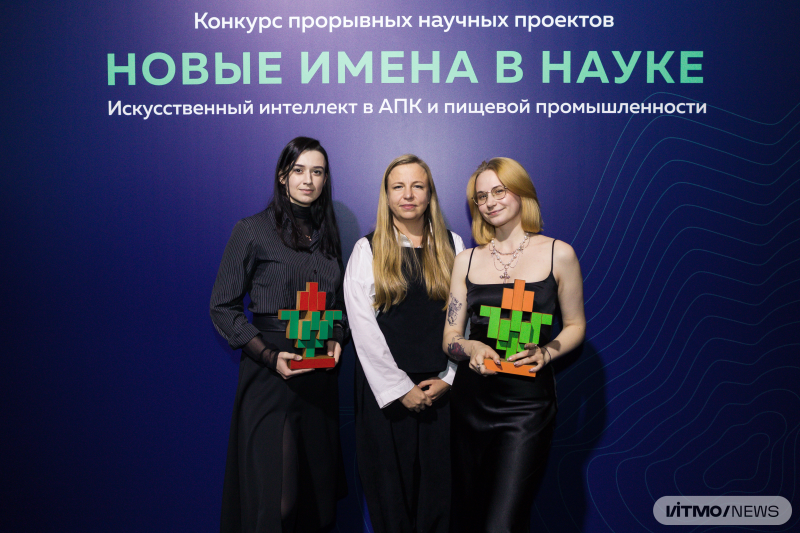
Left to right: Anna Fomkina, Elena Krivoshapkina, and Anastasia Dmitrieva. Photo by Dmitry Grigoryev / ITMO.NEWS
ML-based digital coffee taster
Another team, featuring Alexander Aglikov, a junior researcher at the Laboratory of Intelligent Technologies in Infochemistry, is studying the taste of coffee using machine learning. For this project, the researchers analyzed the electrochemical characteristics of the beverage and tested 800 coffee samples in collaboration with professional baristas. As a result, they were able to develop a system for tasting coffee that includes a sensor and ML-based software. The resulting algorithm will be able to accurately predict the taste of coffee (its bitterness, sourness, or sweetness) based on its electrochemical properties.
“Having conducted several interviews with industry representatives, we believe that we’ll be able to help the coffee industry improve their products by monitoring the quality of raw materials and the products themselves. Currently, the algorithm is 70% accurate and can predict that the coffee sample will be bitter but with average sourness. In the future, our partners, the Bellini Group restaurateurs in Krasnoyarsk, are planning to use our solution to improve the quality of coffee in vending machines,” shared Alexander Aglikov.
Read also:
AI Barista: Digital Coffee Taste Predictor To Be Developed at ITMO
Blue Sky Research is a contest of research projects by young scholars who use artificial intelligence to solve problems at the frontiers of science. The term “blue sky research” is used to refer to scientific inquiry in domains where real-world applications are not immediately apparent. That is precisely why it is deemed high-risk research.
In research teams, scholars are separated into two roles: a “scientific client” and a “scientific contractor,” which makes it possible to assemble interdisciplinary teams of specialists with the desired competencies from all around the country. The competition was started in 2021 by St. Petersburg's Foundation for Support of Innovations and Youth Initiatives and the Center for Strategic Research “North-West.” An expert council featuring business representatives and experts in AI and agriculture evaluates the submitted projects.
